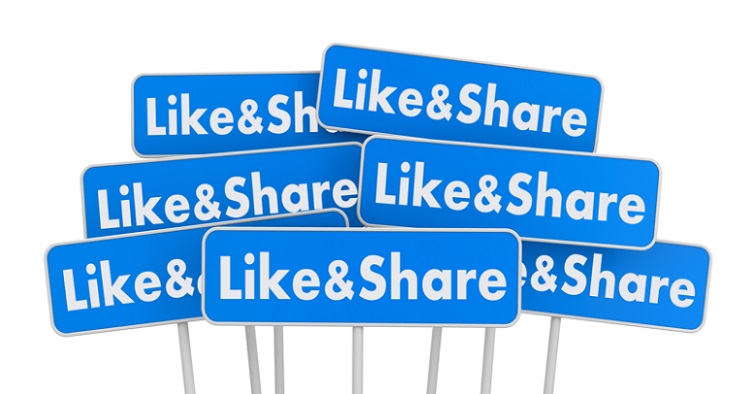Social Media Darwinism | Is Facebook Marketing Dead?
Facebook has become a multi-headed beast where businesses are concerned. For a long time it has been one of the dominant digital marketing channels, and arguably it still is. However recent kerfuffle over U.S. election interference and the proliferation of “fake news” has caused the platform to crack down hard on the way that advertisers interact with the platform. Algorithm changes based on user feedback about advertising haven’t helped either. Unfortunately, many businesses small and large will feel the ripples of those reactions.
That doesn’t mean that Facebook marketing is dead — far from it. It’s still a viable and valuable marketing channel, but making the best of it is going to require new strategies.
The Good Ol’ Days
Way back in the before time, the long, long ago (around 2013), Facebook wasn’t just effective, it was easy. Organic reach for business pages was around 15-20 percent, and getting followers and fans was the name of the game. It was simple: The more people followed your page, the more people saw your posts.
Over the years, the organic reach of posts has decreased a significant amount, and Facebook’s more recent algorithm changes focused on prioritizing friend and family content over posts from pages they follow. Having lots of fans isn’t a clear measure of success anymore. Now, if you want the people who follow your page to even see the posts you make, you have to pay for it.
There are different ways to get your content seen. You can either start an advertising campaign or boost posts, but even with paid boosts, the mood of users as well as the algorithm has turned against sponsored content.
Marketing’s Not Dead!
So is Facebook Marketing dead?
Not at all, but it has changed drastically.
In the end, it’s important to realize that Facebook’s changes are not unlike Google’s changes. They occur at different times and in different ways, but the rub is that users are the lifeblood of the platform. The goal of algorithms that choose what to display is to approximate what the user wishes to see. While these changes are made in the name of user-friendliness, the platform also needs to make money, so Facebook advertising will likely never be “dead” — but you have to react to the prevailing winds.
Give ’em what they like

Shady ads, react and share bait posts, listicles without substance, clickbait headlines — users are sick of exploitative and poor-quality tactics, and those tactics are rightfully being penalized. It’s unfortunate that Facebook’s own loose content policies created the issues in the first place, and now a large swathe of businesses are being penalized. It means that even if you don’t engage in shady content tactics, it’s time to double-down on creating quality content that people read and interact with, that they enjoy, and that teaches them something.
One idea to consider is to give users incentives to follow you on other platforms, where you have more reliable access to them. Some examples of channels they could follow include social media pages, email lists, or your onsite blog. Running promotions or contests that require an email signup or social media follow is one good way to do this.
Manage Your Audience Targeting Carefully
One of the most useful things about Facebook advertising in particular is the ability to create targeted ads based on the social information of users. This Facebook audience feature is especially useful for small and niche businesses, allowing you to be very particular about who you target and when. This tool is ideal for small businesses on a budget due to the amount of control you get over how your dollars work for you.
Facebook also remains useful for small businesses and independent creators despite the algorithm difficulties for these audience features, because it allows you to cultivate and speak to extremely niche audiences, and take part in activities and interests they share. It’s also a good source of more grassroots marketing efforts, because these days many people like to rally around small businesses in their community, as distaste for the business practices of the bigger guys grows. Social media often breeds community-focused movements. Small Business Saturday in November is one example, presented as the small business alternative to Black Friday. It’s a great opportunity to use social platforms like Facebook to reach people by creating content around a common popular topic.
Making sure that those well-targeted ads aren’t wasted is the trick, and Facebook is a heavily saturated platform. Done the right way, it’s a very effective platform for engaging new users or re-engaging past customers. However, the additional work involved and the significantly reduced organic returns may mean that today, Facebook marketing isn’t the best tool for everyone. If you don’t have a very strong sense of who your target audience is, and know that they use Facebook (many young people don’t!), it might be best to save that money.
Make Use of Video
Facebook is prioritizing video content, it’s been a rumour for a while, but we know it now for sure. Some key takeaways include that they are spending around $1 billion on developing their video content platform, which they wish to position as competition to the likes of YouTube.
Both live and recorded video are seeing boosts, and videos that drive repeat viewership are very likely to encounter a friendly algorithm.
What this means for your business is that a robust schedule of video content — non-promotional and promotional, live and recorded,— may just be the new secret to Facebook success. You’ll need to learn the ins and outs of creating and editing videos for Facebook’s platform, and start experimenting with content and formats that users respond well to.
Facebook marketing is far from dead. It’s certainly not as easy as it was a few years ago, but for the right amount of effort, for the right audience, it’s still very much worth its while.
